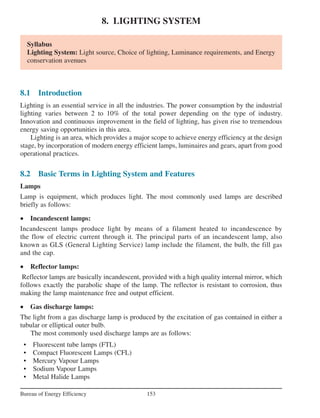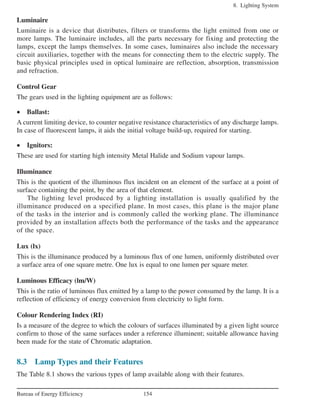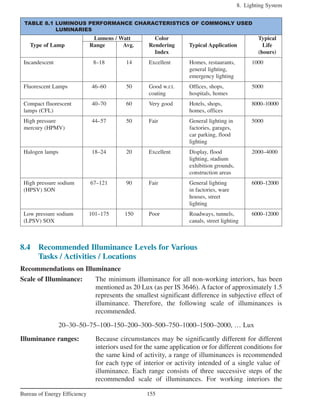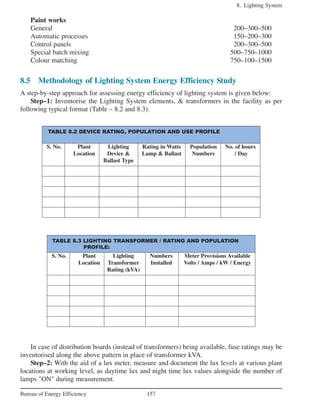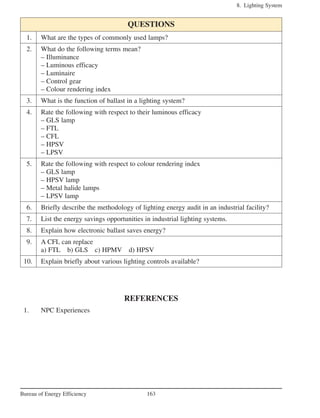The document outlines the fundamentals of lighting systems, emphasizing energy consumption, lamp types, and efficiency measures in industrial settings. It covers essential terms and concepts such as illuminance, luminous efficacy, and colour rendering index, while providing recommendations for energy-efficient lighting practices and illuminance levels for various tasks. Additionally, it details methodologies for assessing energy efficiency in lighting systems and discusses the adoption of modern lighting technologies.
